Great Harvest knows that its core target market is women baby boomers. That’s not to say that we don’t attract other loyal customer subgroups. We do and we try to reach all customer groups with relevant, enticing messaging.
What do we know about boomers?
- They have the largest income of any generational segment, controlling nearly $7 trillion in annual spending.
- Eating habits and quality of life are important to them.
- The growth of organic, sustainable and local food movements and high-end grocery stores like Whole Foods can be traced to boomers.
- They want to live longer and better and are willing to pay more for quality products.
- Boomer households spend approximately 45 percent of their total food budget away from home.
This is excellent knowledge for retailers serving a similar target market, but is it enough?
I recently read the book “Why She Buys,” by Bridget Brennan. Brennan feels many retailers need to be much smarter about reaching the world’s most powerful consumers, aka women. The female boomer audience alone is approximately 41.5 million this year.
It’s no secret that women dominate in the purch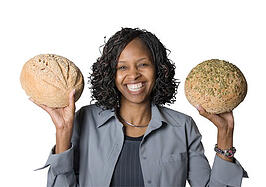 ase of food, health, household goods and beauty, but according to Brennan they have becoming increasingly influential in “male” categories (i.e., cars, homes, electronics and computers).
ase of food, health, household goods and beauty, but according to Brennan they have becoming increasingly influential in “male” categories (i.e., cars, homes, electronics and computers).
Brennan states that the use of empathy, validation, affirmation, humor, storytelling, third-party endorsements and appreciation are critical when communicating effectively with women. She cites Oprah as someone who skillfully orchestrates all of these factors. Brenner uses an example of a headline from Oprah’s magazine “You Are an Excellent Woman!” and how “You Are an Excellent Man” wouldn’t likely be seen in a men’s magazine.
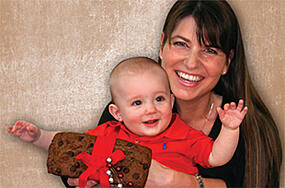 Brennan also points out that women are constantly thinking about the needs of people in their lives. A 2008 Great Harvest customer survey indicated that women overwhelmingly purchase our bread for loved ones.
Brennan also points out that women are constantly thinking about the needs of people in their lives. A 2008 Great Harvest customer survey indicated that women overwhelmingly purchase our bread for loved ones.
This is powerful information and helps guide what we emphasize in our marketing materials. For example, research shows that whole grains help women lose weight because they are digested more slowly and deliver a consistent flow of energy.
That could be a major selling point, but we don’t want our whole grain breads to be positioned as “diet” products. Therefore we consciously choose to emphasize more family-relevant language about the fresh, flavorful, nutritious and made-from-scratch characteristics of our bread. As a mom, those messages definitely resonate with me more than a “diet” message would.
The entire book “Why She Buys” is loaded with great insights about psychological, physiological, socioeconomic and cultural characteristics of women as compared to men. My favorite line in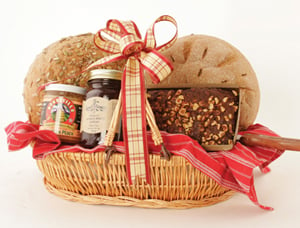 the book is “truly great products don’t just solve a problem; they offer an element of delight…and that’s what separates the billion-dollar brands from the chaff.” And I’m betting the “delight” factor is universal.
the book is “truly great products don’t just solve a problem; they offer an element of delight…and that’s what separates the billion-dollar brands from the chaff.” And I’m betting the “delight” factor is universal.
At Great Harvest we are solving a problem by offering the marketplace another whole grain bread option, but that’s not what has sustained us for more than 30 years. Our customers tell us we delight them by being a slice above other options in the freshness, taste, simplicity and the authentic nature of our products, but we know there’s an emotional side to delighting customers, too.
Brenner underscores that women respond to personal experiences and successful retailers create products and experiences that appeal to both the head and the heart. Makes sense. We understand that a shopper can get a pretty decent loaf of bread at the grocery store and that shopping at Great Harvest means another stop in a busy day. Yet we’ve become a beloved destination.
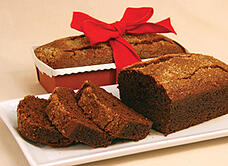 We’d like to think, in addition to offering the freshest bread in the neighborhood, that our genuinely upbeat, locally-owned and community-focused bakeries align with our customers’ values. So through product quality, an enjoyable shopping experience and a community focus, we strive to create friendships and long-term relationships with women and men who value those characteristics in a retailer.
We’d like to think, in addition to offering the freshest bread in the neighborhood, that our genuinely upbeat, locally-owned and community-focused bakeries align with our customers’ values. So through product quality, an enjoyable shopping experience and a community focus, we strive to create friendships and long-term relationships with women and men who value those characteristics in a retailer.
Brenner recommends that a business who primarily serves women create a corporate culture aligned around its customer base; educate employees to address gender dynamics and 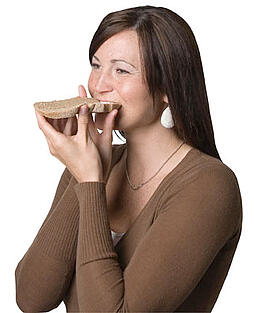 communication styles; place women in management-level marketing positions (I like that one); and have management-level women leading product development and design.
communication styles; place women in management-level marketing positions (I like that one); and have management-level women leading product development and design.
Some of the companies and brands Brenner feels have successfully cracked the female code, include:
- Apple: by creating stylish, fashionable, user-friendly products and stores.
- Clif Bar & Company: by capitalizing on health and wellbeing concerns of women 45+.
- Lululemon: by designing stores that feel like small, locally-owned boutiques.
- Starbucks: by creating a sense of community, promoting fair-trade practices, within comfortable, stylish stores.
- Williams Sonoma: by focusing on the joy of cooking rather than the chore of cooking within impeccably clean, organized and well merchandised stores.
- Whole Foods: by making customers feel good about the health and environmental benefits of purchasing organic foods.
- Zappos: by providing a very generous, easy-to-use return policy and through remarkably friendly, knowledgeable and responsive customer care.
In fairness to men, I don’t think gender differences are always black and white.
I think men’s and women’s values often overlap. The difference is in how men like to receive information. For example, men tend not to discuss feelings, so a rational product appeal to men may work much better than an emotional one.
So let me ask you (men and women) which businesses you feel are especially geared to you and why? Are there retailers whom you’ve been loyal to for many years? Which ones and why?


